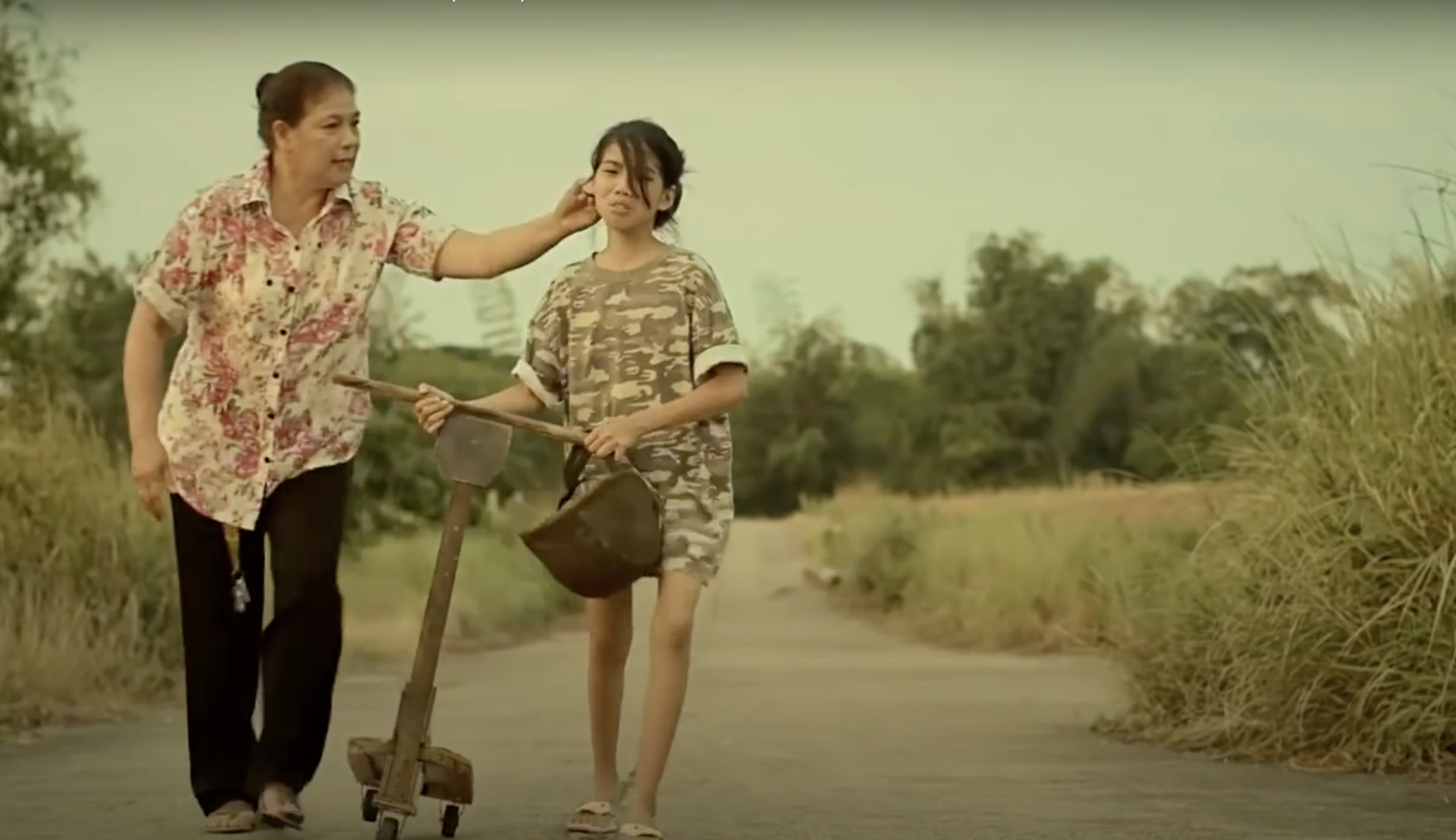Anita’s Last Cha Cha - Ang huling cha-cha ni Anita Directed by Sigrid Andrea Bernardo
Anita’s Last Cha Cha - Ang huling cha-cha ni Anita
Directed by Sigrid Andrea Bernardo
Starrings: Angel Aquino, Therese Malvar
Country: Philippines
Year: 2013
Review Author: Roberto Matteucci
Click Here for Italian Version
"I am too old to get spanked."
The cha-cha-cha dance comes from Cuba. Like all dances born on the Caribbean island, it has a fast tone and it is the man who leads the woman.
Sixteen thousand kilometres away from Cuba, there is the same passion for cha-cha-cha: in the Philippine islands, demonstrating the wide diffusion of Latin music in the world.
It is even the title of a film - Anita's Last Cha Cha - Ang huling cha-cha ni Anita - by Filipino director Sigrid Andrea Bernardo presented at the 13th World Film Festival of Bangkok.
In a small village in the Obando area, near Manila, there is still an intense social relation. The kids live quietly, play in the countryside or wander around the still unpaved streets. Among them, there is the twelve-year-old Anita. A beautiful, lively, intelligent, sensitive girl.
The country’s peaceful environment is agitated by Pilar’s return. A fascinating woman with a solid personality. She had moved to Dubai years ago. Despite rumours of her dubious morality, Pilar occupies the old family home. She has to reconcile with her past. She uses her studies and experience as a masseuse and starts working. She has many customers, not only for the skill by the touch of her hand but above all for her amazing beauty.
If for the inhabitants, the reappearance of Pilar is stormy, for Anita, it will be an unstoppable love.
Sigrid Andrea Bernardo explains it:
"We’ve all been there, childhood that is, and during that time I bet we all had a childhood crush at some stage. Be it a friend, someone older we admired or even an adult, it’s a phase in what’s called 'growing up' and we all know it well. " (1)
For the intellectual understanding, the narrative of lesbianism must be omitted because it is trivial. The film talks about a deeply pure and sentimental love of teenage. Adolescence is the time of the explosions of profound crushes. This is the theme supported with visual ability by the author: the ease of a young person to fall in love and transfigured it into eternal dreams.
Anita has grown up, she is a Filipino army officer. The opening scene is in the barracks, the soundtrack is the cha-cha-cha music. Anita is the platoon commander. She discusses with a woman soldier, who arrived late for enjoying with her boyfriend in a coffee shop. At the end of the day, she plays the harmonica and the nostalgia of her childhood surprises her. The story of her youth begins.
The director drives the film based on the child's perception, using many slow-motion images or close-ups that are often funny and ironic. In Anita's eyes, humanity is deformed but full of hope. In daydreams, Pilar appears to her in disparate places, but sometimes, they are nightmares, with Pilar, who tries to kill her. Thinking about her, Anita is unable to read the truth. When Pilar kisses her former boyfriend, Anita does not understand. She is confused, she plays the harmonica, she is inexperienced, innocent, but she is curious about the new events of her life: “Some people can't make up their minds. There are women who want to have children, while others don't want to have any. Some people like to stay here, while others dream to live overseas. Some people fight to live another day, while others give up on life. Then there are old people acting like children, and children acting way ahead of their age. It's confusing”.
In the village, there is not only love and harmony. The bright light, the cheerful children engaged in playing at the marriage between two women, the elegance of Pilar, Anita's sweetness, hide some invisible, individual and personal tragedies. Pilar has a great secret. She does not reveal it, so she preferred to run away from family and boyfriend and exposed herself to the repugnance of the inhabitants.
The dichotomy of the place is underlined in two alternates mounted sequences: abortion and birth. They are opposite faces, the life and death of a creature, but both are described with the strong signs of suffering and cruelty.
Thanks to the rhythm, the film is enjoyable. Violence is soon forgotten, not buried but set aside to let the joy flow. Sigrid Andrea Bernardo language is an allegory, like the cha-cha-cha, alternating speed and deceleration, but continuously maintaining connected dialogues, images and music.
The culmination is during the procession of Santa Clara. The Saint is transported to the roads, people dance, sing, celebrate. There is also Anita, the perpetual presence of Pilar will accompany her forever, not in reality, but in the dreamlike memories of childhood.
The long flashback finishes with the meeting between the little child Anita and the mature one near the Pilar's house. There are so many moving sequences in the film, but the most exciting shot is the close-up of Anita. She talks to the camera as if Pilar were in front of her, but it is just the pillow.
Other movies of 13th World Film Festival of Bangkok









On 21 December 2012, according to the alleged Mayan calendar, should have been the date of the end of the world. The catastrophic prediction, spread by internet, frightened the most delicate minds. The film Videophilia (And Other Viral Syndromes) - Videofilia (y otros síndromes virales), by director Juan Daniel F. Molero, narrates an episode in Peru related to the prediction. The story has an electrified evolution between the tragic and the amused. The author depicts it with dirty shots, grainy images, extreme editing between video games and porn chat, with emoticons peeking out on the screen.